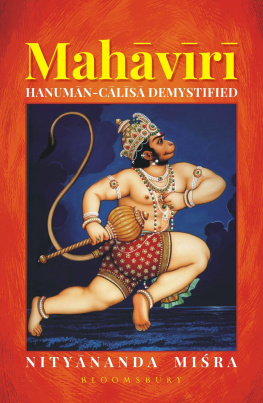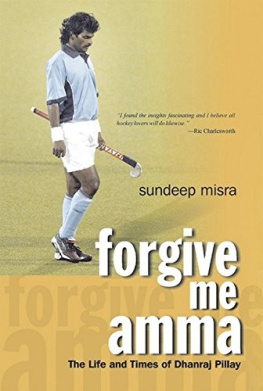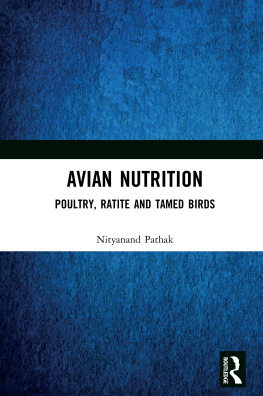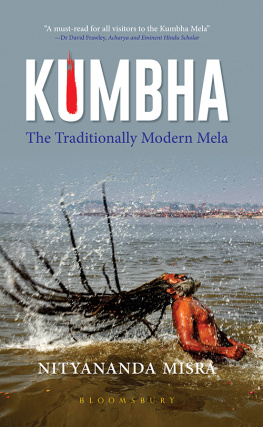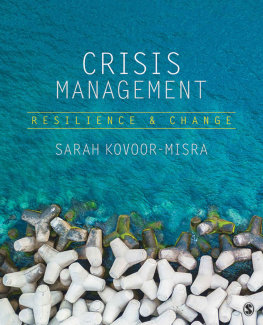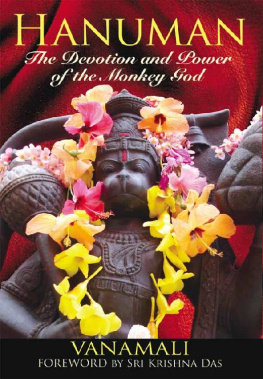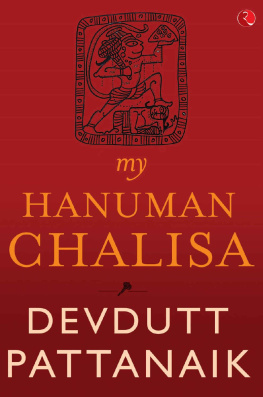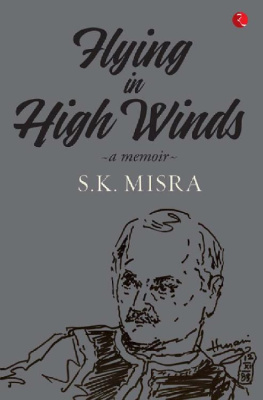For transliteration of Hindi and Sanskrit words, this book uses the International Alphabhet of Sanskrit Transliteration (IAST) with one modification (nasalized vowel) and two additions (retroflex flaps). The transliteration characters with their Devanagari equivalents, broad transcriptions as per the International Phonetic Alphabet (IPA), and examples are listed in the following table. Languages are shown by their ISO 639-1 or ISO 639-2 code ( DE : German, EN : English, ES : Spanish, FR : French, GD : Scottish Gaelic, HI : Hindi, PRA : Prakrit, SA : Sanskrit, and SV : Swedish).
| a | EN alone, fathom; SA ati (), mati () |
| a | EN art, far; HI ma (); SA rma () |
| i | i | EN inner, bin; SA indra (), ia () |
| i | EN each, tree; SA a (), adha () |
| u | u | EN Uzbek, full; SA ukta (), anukta () |
| u | EN ooze, true; HI para (); SA nyna () |
| r | Like UK EN interesting; SA ta (), kta (): vocalic r |
| r | SA pitn (): long vocalic r |
| l | Like EN pickle; SA kpta (): vocalic l |
| e | e | Like EN say; DE Idee, lesen, zehn; SA eka () |
| ai | i | In SA : Like EN might; SA aikya (), vaira () |
| In STANDARD HI : EN mat; HI aise (), baila () |
| o | o | Like EN no; DE Ober; FR chose; SA cora () |
| au | u | In SA : Like EN out; SA aurasa (), saura () |
| In STANDARD HI : EN not; HI aura (), sau () |
Note: The Devanagari equivalents in the second column below are shown with the inherent vowel //.
| k | k | EN call, black; SA kal (), rocaka () |
| kh | k | Like EN workhorse; SA khela (), mukha () |
| g | EN go, dog; SA gta (), rga () |
| gh | Like EN doghouse; HI ghan (), bgha () |
| EN anger, sing; SA aga (), ak () |
| c | c | EN chin, catch; HI pca (); SA cora () |
| ch | c | Like EN hitchhike; HI chpa (), pcha () |
| j | EN job, badge; SA janma (), gaja () |
| jh | Like EN hedgehog; HI jhl (), sjha () |
| ES espaol; FR oignon; SA paca () |
| Like EN time; SV karta; SA k (), paa () |
| h | Like EN guesthouse; HI haga (), gha () |
| Like EN bird; SV nord; HI ara (), aga () |
| h | Like EN birdhouse; HI hla (), buh () |
| Like EN bent; SA kaha (), daa () |
| HI ba (), s (): retroflex flap |
| h | HI pah (): aspirated retroflex flap |
| t | t | ES tres; FR tout; SA taru (), rati () |
| th | t | Like EN bathhouse; HI tho (), htha () |
| d | d | ES dos; FR Dieu; SA dpa (), pada () |
| dh | d | Like EN withhold; SA dharma (), vadha () |
| n | n | EN plinth; ES cantar; SA ntya (), hna () |
| p | p | EN pun, top; SA putra (), kopa () |
| ph | p | Like EN upheaval; SA phala (), kapha () |
| b | b | EN big, ebb; HI saba (); SA bja () |
| bh | b | Like EN clubhouse; SA bhaya (), kobha () |
| m | m | EN month, brim; SA mt (), bhmi () |
| y | j | EN yes, canyon; SA yoddh (), vyu () |
| r | r | Like EN red; ES rey; SA ravi (), taru () |
| l | l | EN law, all; SA loka (), trila () |
| v | w | EN which, cobweb; SA vra (), kavi () |
| EN ship, push; SA la (), pau () |
| Like US EN marsh; SV fors; SA a () |
| s | s | EN see, yes; SA sen (), prasna () |
| h | EN hand, ahead; SA hita (), vihna () |
Among the many deities that are held in high esteem by Hindus around the world, there are two zoomorphic deities: Ganesha and Hanuman. These are perhaps the most popular in the Hindu pantheon. No prayer or event can start without a prayer to Ganesha. Hanuman is also extremely popular, not only because he is so closely associated with Sri Rama and the whole Ramayan epic, but also because he is looked upon as a manifestation of Shivas eleven Rudras. As a result, magnificent temples to Hanuman have been built around the country. The most impressive one that I have seen is at Suchindram in Tamil Nadu which houses a massive statue of Hanuman.

